Meet the Man Who Survived 16+ Hours at Sea After His Boat Capsized
Updated: Jul. 17, 2024
This is his amazing story of survival and strength
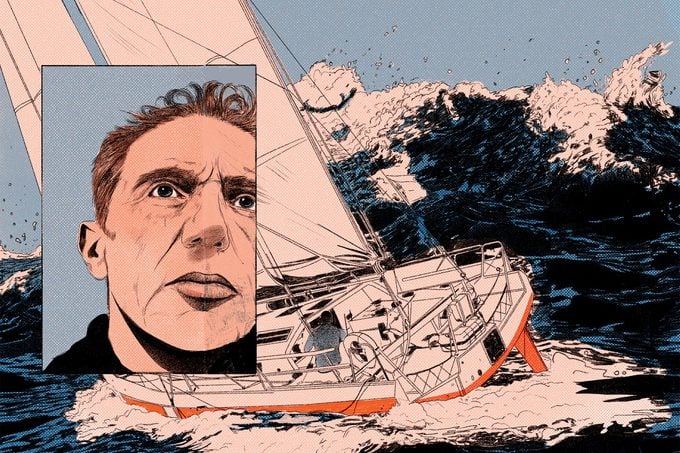
Laurent Camprubi is about 15 miles off the coast of northwestern Spain, hoisting the mainsail on the deck of the 39-foot sailboat Jeanne. Ever since he left Lisbon, Portugal, the day before, he has been fighting the elements. But he is in his element too.
Camprubi is aiming to qualify for the Route du Rhum, a 4,077-mile race held every four years from Saint-Malo in France to Guadeloupe, a group of islands in the Caribbean. On a night that’s anything but calm, the solo athlete is tacking, adjusting, to ensure that the vessel gets to its destination of Cherbourg, France, about 1,050 miles to the northeast. After more than 12 hours of sailing, Camprubi decides to take a much-needed break. While a beacon automatically broadcasts his position to Route du Rhum organizers every 15 minutes, the waves batter the Jeanne in a language all their own: screams, whistles, crashes, roars.
He knows that in the distance is the craggy peninsula Cape Finisterre, or “end of the world,” but 6- to 10-foot waves have turned his surroundings into a uniform dark gray.
A test of strength and perseverance
Tall and lanky, the 62-year-old has been sailing since his 20s and is eager to tackle the Route du Rhum, which he considers “the Everest of sailing.” A stylist for a Portugal-based fashion footwear company, Camprubi lives with his partner, Virginie Philip, and their two children in Marseilles, where he has been training for months. The race would be a test of strength and perseverance, and Camprubi, a lifelong cyclist and runner, has also been doing weight training to build his core muscles so that he will be better able to keep his balance in rough seas. And tonight, it is indeed rough.
As Camprubi lies in the cockpit, resting, a wave crashes into the boat, which suddenly slows down. Opening his eyes, Camprubi sees the boat beginning to list to one side, and he knows what has happened: He has lost the keel—the weighted fin that runs along the bottom of the boat to keep it upright. The Jeanne is capsizing.
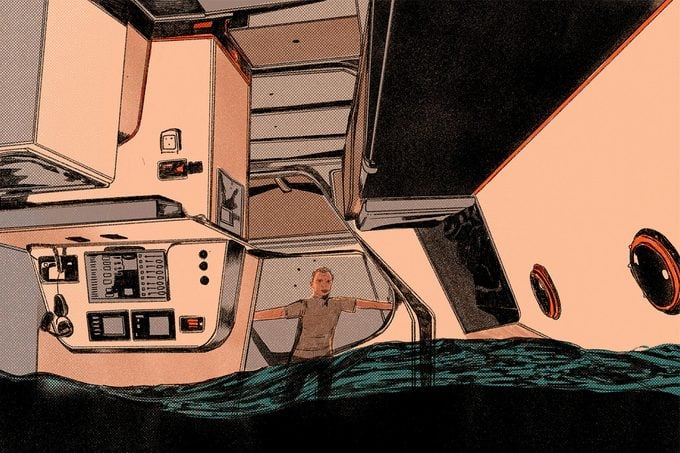
You have 15 seconds to get below deck before the boat flips over, he tells himself. Your life depends on it. Move!
Once below, he attempts to close the door, but water keeps rushing in, making the task impossible. The Jeanne violently flips upside down, bobbing in the waves. Camprubi has been thrown to the ceiling and is crouched there, on what is now his floor. His prescription eyeglasses are smashed, as are the computer and other electronics, and the pieces are floating in seawater.
He ventures farther into the boat to retrieve his survival kit, then returns to what he judges to be the safest spot, by the door. Almost 20 minutes after capsizing, he sets off his SOS signal and grabs his bright red survival suit. Made of waterproof neoprene, it’s a bulky, stiff onesie, complete with hood and attached booties. He knows that adrenaline is still keeping him warm, but once it wears off, the suit is his best defense while waiting for whatever help might come. He’s in an air bubble; the water, about 68 degrees, is now up to his chest. So on goes the suit, one cramping, chilled leg at a time.
At 8:23 p.m., moments after Camprubi activated his emergency beacon—which contained both a radio transmitter and global positioning system (GPS)—the Spanish coast guard detected it. Immediately, an elaborate, tightly choreographed effort was put into action, complete with two rescue ships, three helicopters and five divers. It was black outside, and dangerous. The question on everyone’s mind: How could the vessel’s lone occupant survive in such weather, no matter how experienced?
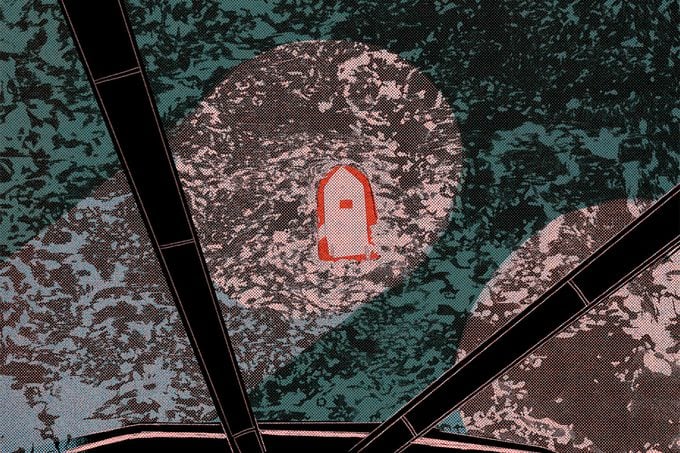
Help will come, help will come
At 9:26 p.m., one of the helicopter pilots spotted something white in the swirling, angry sea: the bottom of a sailboat that appeared to be missing its keel. One option—to secure the vessel with slings and hoist it onto one of the ships with a crane—was dismissed as foolhardy because of the wind and the danger it posed to Camprubi. Besides, no one knew what was happening inside.
A diver was lowered by a cable onto the hull of the boat, tasked with checking for signs of life. He banged on the hull, shouting that help had arrived. But his words blew away with the wind.
Camprubi is finishing putting on the top part of his survival suit when he hears someone banging on the hull. Thump. Thump. Thump. He tries to hammer back, but his arms get entangled in the sleeves.
“I’m here!” he shouts. “I’m here!”
Then, nothing. Was he heard? He curls up into a corner to wait, water sloshing and rising ever higher. His air bubble can’t last forever.
Help will come, he silently recites. Help will come. Help will come.
Still, a darker thought intrudes: Maybe I’ve been abandoned.
To the rescuers’ surprise and relief, they heard the sailor shouting back. But for everyone’s safety, they put off any rescue attempt until the next morning, when calmer seas and daylight would prevail. The question was, would Camprubi still be alive when they came back? Time was not their ally. He could die from exposure, or he could drown. But they had no choice.
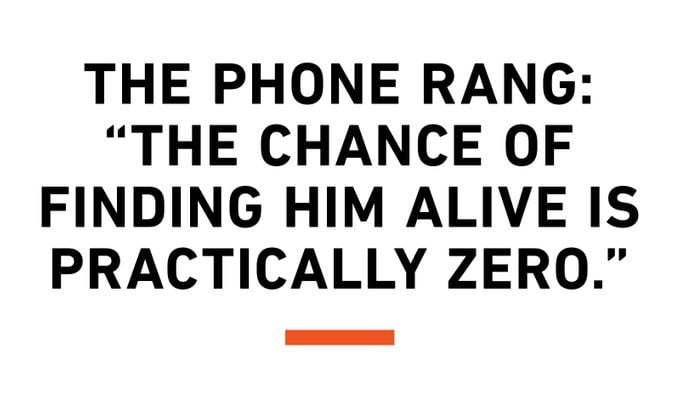
That evening, a representative from France’s Ministry of Defense in Marseilles phoned Virginie Philip, but she assumed it was a telemarketer and didn’t answer. When she checked her voicemail 15 minutes later, she heard a message telling her that Camprubi’s emergency beacon had been set off. Her world fell apart.
“Is Laurent OK?” she asked when she called back.
“We don’t know,” came the reply.
And so, the waiting began.
The couple’s daughter, 12-year-old Jeanne, stayed beside her mom while their son, 3-month-old Paul, slept.
Philip called Richard Sautieux, Camprubi’s friend and sailing team manager, to see if he could find out what was happening. At midnight, she received an update from the organizer of the Route du Rhum: All he could tell her was that the boat had capsized, and the Spanish coast guard was involved.
Trying to tamp down her panic, Philip focused on being calm in front of her daughter, who eventually fell asleep. Unable to sleep herself, Philip watched the hands of the clock slowly crawl past 1, then 2, then 3, then 4 a.m. Just past 8 a.m., her phone rang again. It was the Ministry of Defense with bad news: The chance of finding him alive is practically zero.
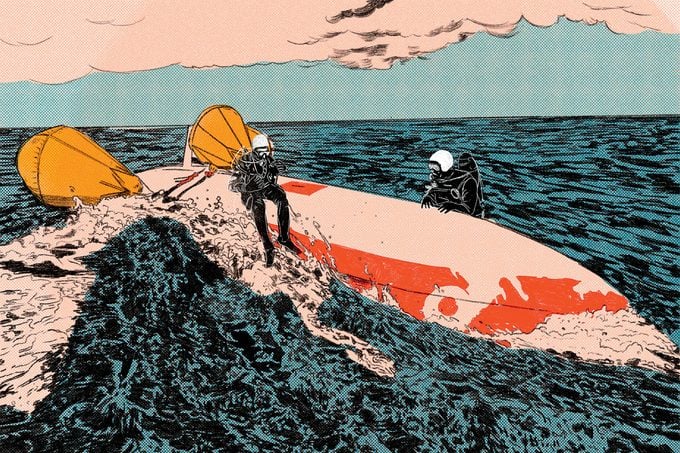
It was time to tell Camprubi’s family. Philip started by calling Camprubi’s brother, who assured her that Camprubi was too stubborn to give up.
“He will fight to the end,” he told Philip. “Trust me, if anyone is going to survive something like this, it’s him.”
No choice but to have faith
On one level, Philip agreed. Certainly, the man she had been with for 14 years lived large and took risks, but he’d never been one to panic when bad things happened. And right now, she had no choice but to have faith.
In the cabin of the Jeanne, Camprubi is disheartened, and so tired. Water, still seeping, sloshing and spraying, has filled more space, shrinking his air bubble. The water is also mixed with gas from an engine he had on board for emergency use, which he never got a chance to use. Not only is the smell overwhelming, the gas stings his skin and he has to keep his eyes shut tight to protect them.
Time means nothing now, minutes and hours flowing into each other in a jumble. Maybe it’s 2 a.m.? He can’t remember when he last ate or slept.
Don’t think about that. Focus. Don’t fall asleep.
He knows that the air bubble that’s keeping him alive continues to shrink, and the water level has crept higher on his chest. With a grunt, he reaches out to grasp safety handles attached to the sides of the hull. He knows he needs to keep as much of himself out of the water as he can if he’s to avoid hypothermia.
From time to time, Camprubi tries to concentrate on listening for a sound—anything that signals the coast guard has not given up on him. But as the light gets stronger, there is only quiet and calm.
Images of his life crowd his mind. Not his life flashing before his eyes, but the things he will miss about his life. Things like conversations with his three adult children from his first marriage. And also what he won’t get to be there for: Paul saying “Papa” for the first time and taking his first steps. Jeanne graduating from middle school.

By now, Camprubi has been gripping the handles for hours, and he’s exhausted. He lets go of them. He’s floating on his back, arms and legs splayed. But when the water laps over his face, he sputters and is alert again.
And then he hears knocking.
Just before 9 a.m., some 13 hours after Camprubi’s boat flipped, two divers made their way to the Jeanne. The seas had calmed, and their job was to secure the boat with three giant yellow buoys. The idea was to keep the boat afloat while the team conducted either a rescue or a salvage operation. When it was secured, the divers knocked on the hull. They didn’t expect to get a response, but they heard shouting. Against all odds, against the mercurial sea and wind that had toppled him over, Laurent Camprubi was alive. Diving below the surface to peek in the cabin window, they saw his red booties moving.
But wires and jagged pieces of broken wood and metal floated underneath the hull, blocking the divers’ access to the cabin door. So they began the painstaking job of diving under, again and again, to clear a path. It was slow, dangerous work with objects that could slice or snag them. Bit by bit, one hour flowing into a second hour, then a third, they collected and disposed, rising to the surface when a bag was full, then diving back down again.
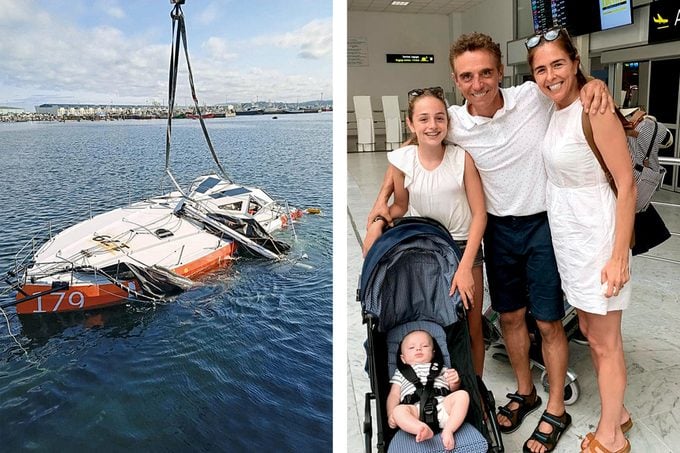
You have to stay alive, Camprubi told himself. But he knew that now was not the time to start doubting his rescuers. As one of the helicopters positioned itself above the Sar Gavia, a bright orange, 130-foot tugboat, a diver knelt on top of the hull of the sailboat, explaining in shouts to Camprubi what they needed him to do.
Camprubi learned there would be no helicopter to lift the Jeanne up because the vessel was already in pieces. That no divers would smash through the window to pluck him out because it wasn’t big enough; besides, water would rush in and pull him under. The only way out was through that door.
Surviving was up to him
Tired and chilled from so many hours of exposure, his muscles cramping, Camprubi understood that surviving this was still up to him. Because as soon as a diver opened the door, he would have to swim out fast, with everything he had, to avoid the torrent of seawater waiting on the other side to pin him down and drown him. He’d have one chance.
The rescue began just after noon. Holding his breath, Camprubi waited by the door, treading water, poised to break through when it opened. He forced himself to breathe slowly, calmly as he waited—and suddenly, the door opened. Acting on instinct, he was through it like a shot, swimming, using adrenaline and his arms and bicycle-hardened legs to power against the rush of the water. He swam under the hull and then made a right turn to go up, up six feet to the surface. He broke through to the surface, gasping for air. A diver—the same one who had knocked on the hull the night before—was waiting to attach a harness so the helicopter could hoist him aboard.
The men embraced. “I was so afraid you wouldn’t survive the night,” the diver admitted.
Camprubi answered: “I was so afraid you wouldn’t come back for me.”
When Camprubi boarded the helicopter that would take him to a hospital in the nearby Spanish coastal city of A Coruña, his legs buckled as he bent over to catch his breath. It was 12:35 p.m.—more than 16 hours since the Jeanne had capsized.
Soon he’d be treated for exposure and hypothermia, and doctors would flush the gasoline out of his eyes. He would learn that he’d lost 15 pounds during those 16 hours, all of it muscle.
But on the helicopter, none of that mattered. All he wanted was to talk to Philip. When someone on board finally handed him a phone, neither of them could speak—they were both crying too hard.















